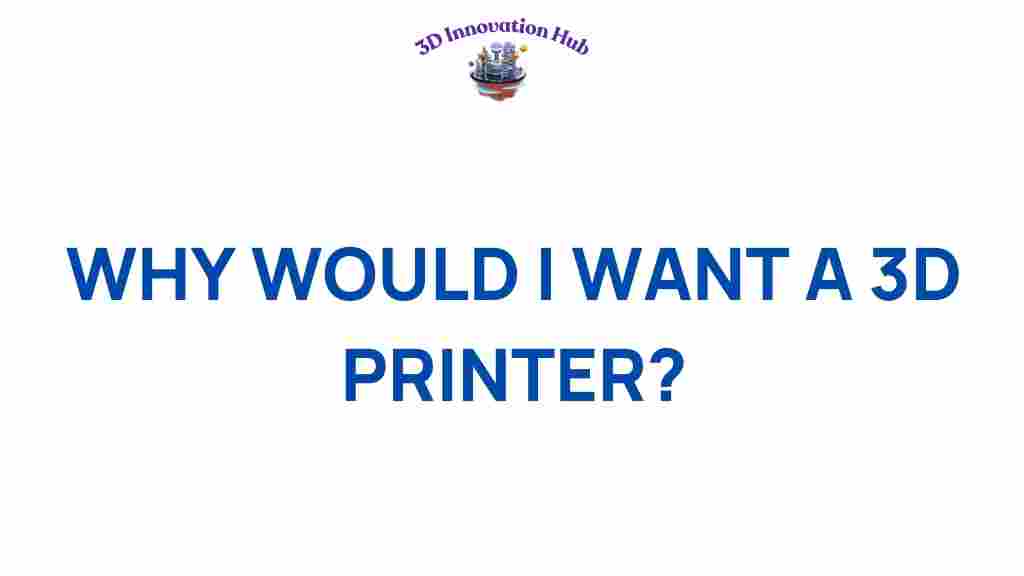Why a 3D Printer Could Transform Your Creative Projects
In today’s fast-paced world, innovation and creativity are at the forefront of many industries. One of the most remarkable technological advancements that has emerged in recent years is the 3D printer. This innovative device has opened up a world of possibilities for designers, manufacturers, and hobbyists alike. Whether you’re prototyping a new product, customizing a gift, or exploring a new hobby, a 3D printer can play a significant role in transforming your creative projects. In this article, we will explore the benefits of using a 3D printer, the process of creating designs, troubleshooting common issues, and how it can elevate your creative journey.
The Rise of 3D Printing Technology
3D printing technology has evolved tremendously since its inception. Initially used primarily in industrial applications, it has now become accessible to the general public. This shift has allowed individuals and small businesses to leverage the power of 3D printers for various purposes, including:
- Prototyping: Rapidly create prototypes for testing and development.
- Customization: Design unique, personalized items tailored to individual needs.
- Manufacturing: Produce small batches of products without the overhead costs of traditional manufacturing.
- Hobbies: Engage in creative projects that push the boundaries of traditional crafting.
The integration of technology in creative processes has empowered hobbyists and professionals to bring their ideas to life with unprecedented ease and precision.
How a 3D Printer Enhances Creativity
Using a 3D printer can significantly enhance your creative output. Here are several ways this technology fosters innovation:
- Unlimited Design Possibilities: With 3D modeling software, you can create intricate designs that were previously impossible to manufacture.
- Experimentation: Quickly iterate on designs by making adjustments and reprinting, allowing for a more experimental and playful approach to creativity.
- Accessibility: 3D modeling and printing have become more accessible, with affordable software and printers available for hobbyists.
- Community Support: An active online community exists where creators share designs, tips, and resources, fostering collaboration and learning.
This democratization of design and manufacturing encourages individuals to think outside the box and explore their creative potential.
Step-by-Step Process: Creating Your First 3D Print
Getting started with a 3D printer can be an exciting journey. Here’s a step-by-step process to guide you through creating your first 3D print:
Step 1: Choose Your 3D Printer
Select a 3D printer that suits your needs. Consider factors like print quality, build volume, and material compatibility. Some popular options include:
- FDM Printers (Fused Deposition Modeling)
- SLA Printers (Stereolithography)
- SLS Printers (Selective Laser Sintering)
Step 2: Design Your 3D Model
Use 3D modeling software to create your design. Some beginner-friendly options include:
- Tinkercad
- Fusion 360
- Blender
If you’re not comfortable creating your own model, you can find free designs on platforms like Thingiverse.
Step 3: Prepare the Model for Printing
Once your design is ready, you’ll need to slice it using slicing software. This software converts your 3D model into instructions that the printer can understand. Popular slicing software includes:
- Cura
- Simplify3D
- PrusaSlicer
Step 4: Print Your Model
Set up your 3D printer with the appropriate material (like PLA or ABS), load the sliced file, and start printing! Remember to monitor the print process to ensure everything runs smoothly.
Step 5: Post-Processing
After printing, you may need to clean up your model. This can include removing support structures, sanding surfaces, or painting for a finished look.
Troubleshooting Common 3D Printing Issues
While 3D printing can be rewarding, you may encounter challenges along the way. Here are some common issues and their solutions:
- Print not sticking to the bed: Ensure your print bed is clean and leveled. Use adhesion aids like glue stick or blue tape.
- Filament jams: Check the filament path for obstructions and clean the nozzle regularly.
- Layer misalignment: This could indicate mechanical issues. Check the belts and ensure everything is tightly secured.
- Inconsistent extrusion: Clean the nozzle and check for clogged filament. Adjust the temperature settings if necessary.
By troubleshooting these issues, you can improve your overall printing experience and achieve better results.
The Future of 3D Printing and Its Impact on Creative Projects
The future of 3D printing is bright, with advancements in materials and technology continuously emerging. Here are some trends that will likely shape the future of this innovative field:
- Bioprinting: The ability to print biological tissues and organs could revolutionize healthcare.
- Multi-material printing: The development of printers that can use multiple materials will expand design possibilities.
- On-demand manufacturing: 3D printing will continue to enable on-demand production, reducing waste and inventory costs.
- Education: As more educational institutions adopt 3D printers, new generations will learn to harness this technology creatively.
These advancements will not only enhance the capabilities of 3D printers but will also empower artists, designers, and hobbyists to push the boundaries of their creative projects.
Conclusion
In conclusion, a 3D printer is a powerful tool that can transform your creative projects by enabling innovation and customization. Whether you’re a professional designer looking to prototype a new product or a hobbyist eager to explore new avenues of creativity, 3D printing can help you realize your vision. By understanding the process, troubleshooting common issues, and staying informed about the latest advancements, you can fully leverage this technology to enhance your creative endeavors. Embrace the possibilities that a 3D printer offers and watch your imaginative ideas come to life!
For more ideas and resources on 3D printing, check out this guide to 3D printing resources.
This article is in the category and created by 3D Innovation Hub Team
